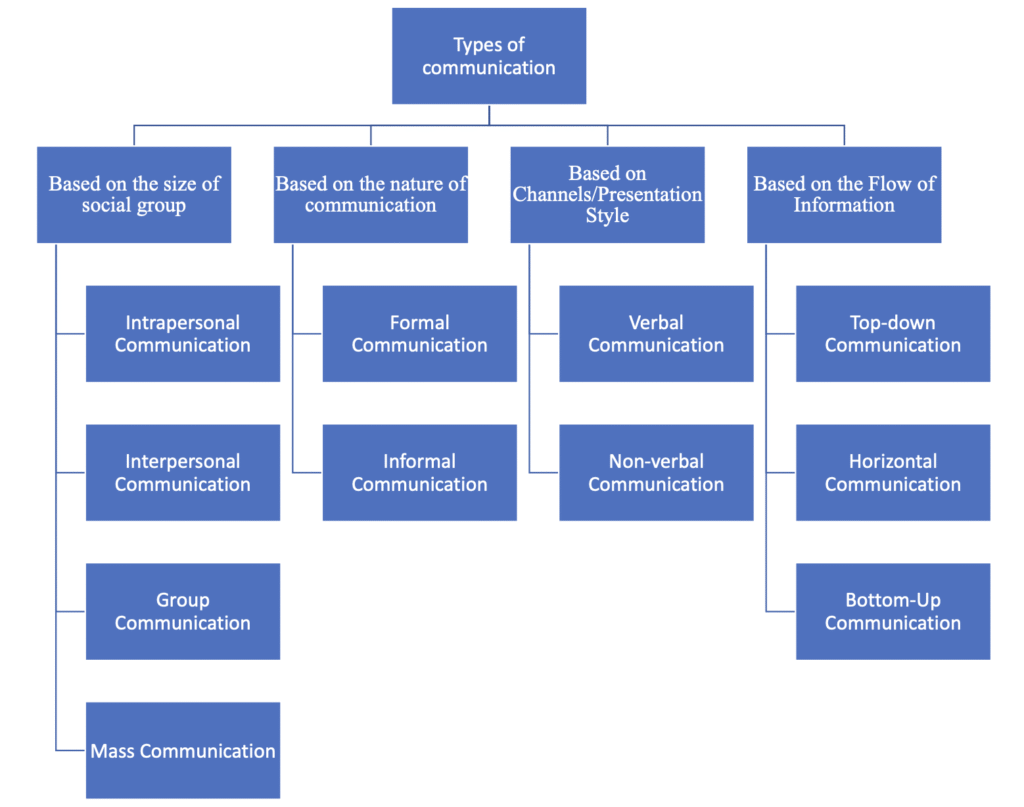Communication is common to all, yet a few can define it satisfactorily (Fiske). Therefore, you’ll find various definitions and explanations of communication on the internet, which might lead to confusion or misapprehension about the topic. As a student of mass communication, or even journalism, you’ll often find yourself explaining what the term means. Thus, having a profound understanding of the topic and knowing what scholars have said in this field will help you build upon your understanding and explanation of the subject.
Difficulty in affixing one definition
Communication is talking to one another; it is a film, it is texting on social media, it is the way we dress, and, at the same time, it is also literary criticism. The list is endless. Thus, it is safe to say communication is ‘omnipresent’ because even silence and death communicate, making people aware of their presence.
Now, imagine applying the term ‘a subject of study’ to something as diverse and multi-faceted as human communication. Is there any link between, say, literary criticism and facial expressions? The short answer is yes! But it requires interdisciplinary tools to explore that ‘link,’ making communication more of a flexible term than a rigid one, like science. Now, a thought might emerge in our minds: is communication then a loosely defined term? Well, no! The answer is very simple: it is something I call a ‘contextually defined’ term, meaning it has particular definitions for particular scenarios. But all those contextual definitions revolve around the theme of ‘commonality,’ which carries the true essence of the term.
At its inception, communication studies or communication science were based in university departments of Literature, Journalism, Sociology, Psychology, and Political Science, borrowing heavily from these disciplines and evolving into a multidisciplinary social science (Keval). Thus, the most characteristic feature of communication is its diversity: it ranges from mass media and popular culture, through language to individual and social behavior (Fiske).
Definitions
The term communication is derived from the Latin noun communis, meaning common, and the Latin verb communicare, meaning to share. Stressing the idea of ‘commonness,’ McQuail defined communication as a process that increases commonality but also requires common elements for it to occur. According to McQuail, communication presupposes a shared symbolic environment and a social relationship among those who participate, leading to social interaction and combining with a set of other factors, contributing to a sense of community.
Likewise, Wilbur Schramm referred to this commonality as a “field of experience.” He suggests that the greater the overlap in the field of experience between the sender and receiver, the more impactful the communication becomes. Even a basic and widely available definition, such as “Communication is the process of sending and receiving thoughts, ideas, or information from one individual or group to another, in order to achieve a desired effect,” highlights the inherently shared or common nature of communication.
Meanwhile, Montague and Matson, taking a step further, stated that communication is a clash of symbols that covers a multitude of signs. But it is more than media messages or information; it also fulfils a deep need and serves a higher purpose. Communication is the ground for meeting and the foundation of community. In short, it is the essential human connection.
For example, imagine two colleagues, Mr. A and Mr. B, working together on a project. They come from different backgrounds, but they share a common work environment and language. As they collaborate and exchange ideas, they develop a shared understanding of their goals and challenges. This shared understanding—what Schramm calls a “field of experience”—makes their communication more effective over time. Through continuous interaction, Mr. A and Mr. B build common ground, transforming their initial differences into a strong working relationship. This process reflects McQuail’s idea that communication increases commonality but also requires common elements for it to occur.
Indian Context
The Sanskrit counterpart of communication is Sadharanikaran (साधारणीकरण), a social process that can be achieved only among Sahridayas—individuals (both sender and receiver) who share a state of commonness or oneness. In this state, they can directly convey thoughts, feelings, emotions, and compassion to one another. This ability is innate but can also be cultivated through culture, adaptation, or learning, with a primary focus on the receiver’s understanding of the message.
Meanwhile, Sahridayata (सदयता) refers to a state of common orientation, mutual understanding, and shared meaning between the parties. Thus, Sadharanikaran is the process through which Sahridayata is achieved between communication participants (Sahridayas).
For example, imagine a village elder telling a traditional story to a group of children around a campfire. The elder uses metaphors, cultural references, and idioms that are well-known within the community. As the story unfolds, the listeners understand not only the literal meaning but also the deeper cultural significance because they share the same cultural background. In this case, the elder and the children are Sahridayas who achieve Sahridayata through the process of Sadharanikaran.
Conclusion
Communication is a multifaceted process that extends beyond the simple exchange of words; it is deeply rooted in shared experiences, common understanding, and cultural context. While scholars like McQuail emphasises the importance of commonality and Schramm highlights the role of a shared “field of experience,” traditional Indian perspectives add a dimension of spiritual and cultural unity. Whether through modern theories or ancient concepts like Sadharanikaran, communication remains essential for human connection, understanding, and the formation of community. Its diverse nature makes it adaptable, allowing it to evolve with the context and needs of those who engage in it.
Further Reading
- Fiske, J. (1990). Introduction to communication studies. Routledge.
- Kumar, K. J. (2000). Mass Communication in India (4th Edition).
- Mcquail, D. (2005). McQuail’s mass communication theory. Sage Publications.
- Schramm, W., & University, S. (1960). Mass communications : a book of readings. University Of Illinois Press, ©, Printing.
- Vir Bala Aggarwal, & Gupta, V. S. (2001). Handbook of journalism and mass communication. Concept.



Pingback: Types of communication: A detailed guide | Media Decoded